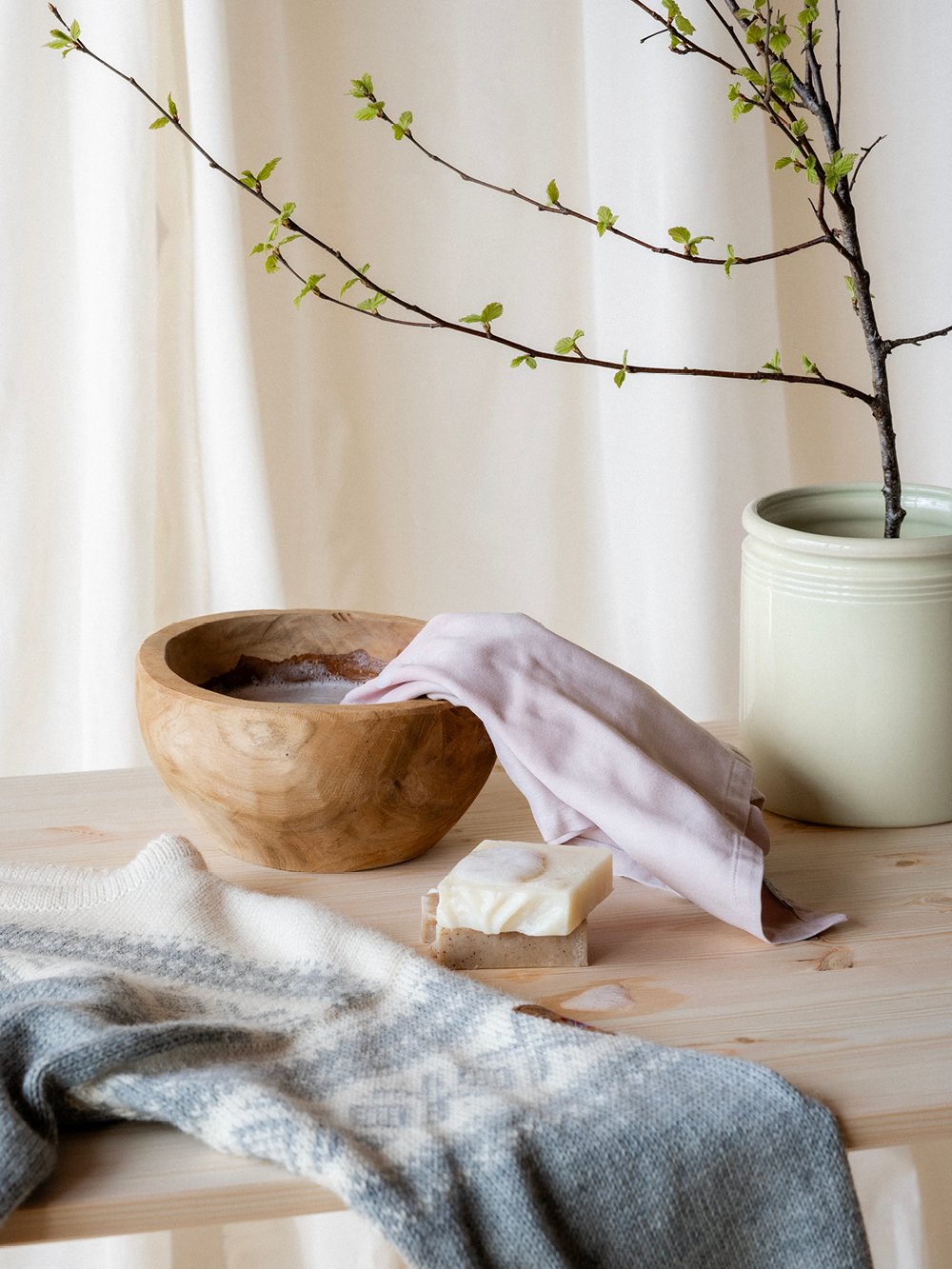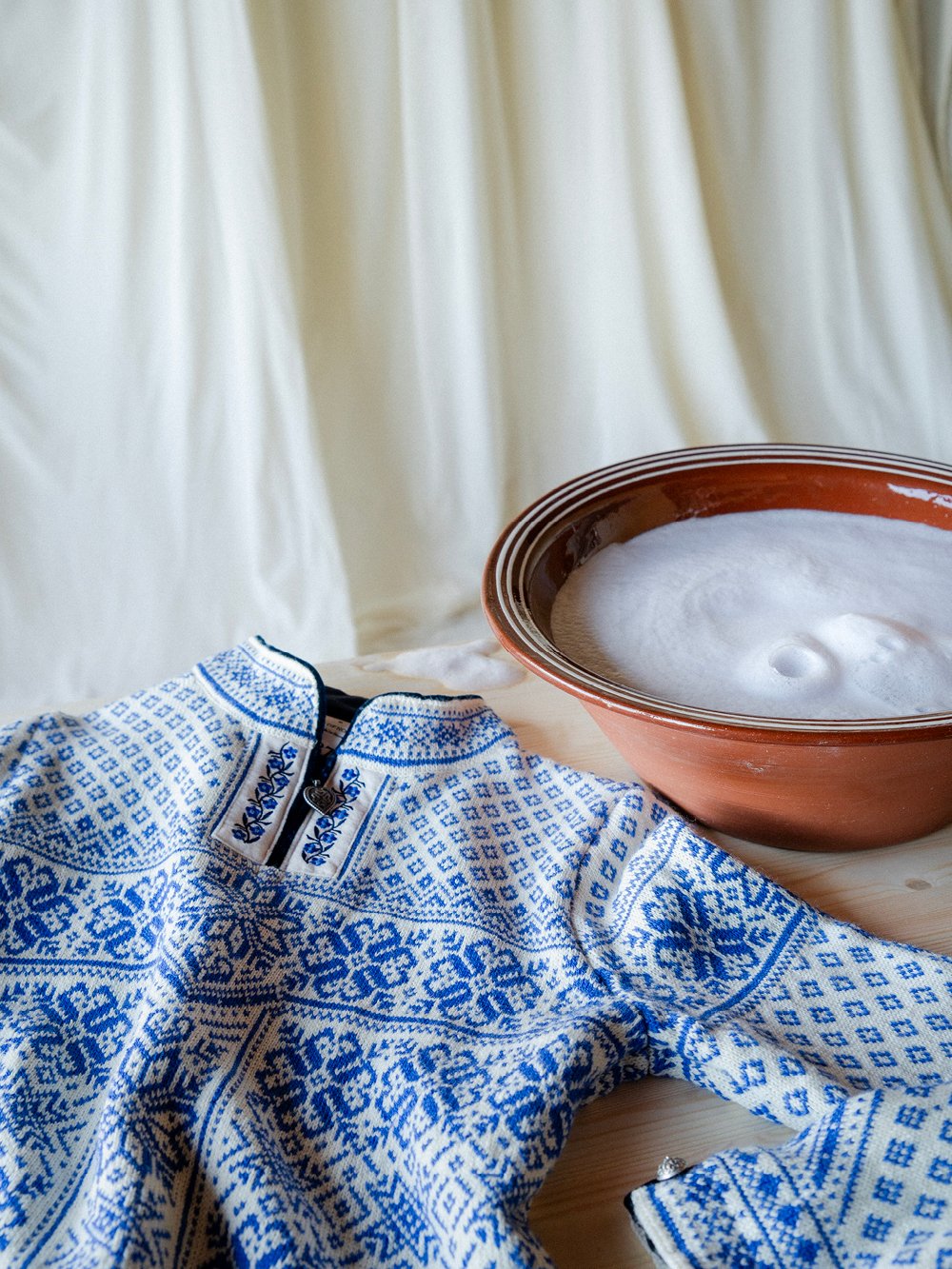Durable garments that are often passed down, and which can remain good as new for several generations.
See our most iconic wool garments here.
1. Less washing, more care: Wool sweaters don’t need to be washed as often as other garments. Limit washing and instead hang wool out to air after use. This helps to preserve the wool's natural properties and extends the life of the garment. Another good piece of advice is to hang the garment for airing in a room with high humidity, such as the bathroom when you shower. It is also worth letting the garment rest by not wearing the same garment day after day.
2. Gentle stain removal: If you get a stain on your wool sweater, avoid washing the entire garment unless absolutely necessary. Instead, gently remove the stain using a damp cloth. This reduces the risk of unnecessary wear on the fibers.

3. Store your wool clothes correctly: When you’re not using your woolen sweater, Gro recommends storing it lying down instead of hanging it. This prevents the sweater from being stretched out over time. Also, make sure the sweater is clean and dry before putting it away. A sealed container can protect it from moths, dust and dirt.
4. Hand wash or machine wash? If you use the wrong washing machine program, leave woolen garments in water, soak, or wash in too hot water and wash too vigorously, the garment can shrink. So do check the washing instructions on the wool sweater carefully. If it is marked with a hand wash symbol, we recommend washing the garment by hand at 30 degrees with a suitable wool detergent. Do not wring the garment. Instead rinse thoroughly and squeeze out the water with your fingers. If, on the other hand, the label has a machine wash symbol at 30 degrees, you can safely wash it in the machine on a gentle wool program with a detergent intended for wool.
5. Careful drying and shaping: After washing, it is important to dry the wool sweater properly. Lay it flat on a towel or drying rack and gently shape it back into the correct shape if necessary. Avoid hanging up wet wool sweaters as this can cause them to lose their shape. Remember that wool doesn’t usually withstand tumble drying, and, if in doubt, always let the garment air dry.
6. Pilling removal: Yarn consists of several wool fibers that are spun together into a long thread. When wool garments are worn and washed, individual fibers can loosen and form small balls or pilling as they roll up. The pilling usually form as a result of friction, such as when the wool garment comes into contact with a seat belt or a bag.

When washing woolen garments, there is also a risk of lint forming, especially if the machine is too full. The amount of bobbles forming varies depending on the type of yarn and knitting strength. Generally speaking, the looser the yarn is spun and knitted, the higher the risk of snagging. It is also individual, and some people get more bobbles than others. Fortunately, the bobbles are easily removed, either with a bobble remover, or by gently removing them with your fingers.
Wool is a natural material with unique properties that have kept us warm over hundreds of years. By treating our woolen garments with love and care, we can extend their lifespan, maintain their excellent quality and thus contribute to a more sustainable wardrobe and future.





